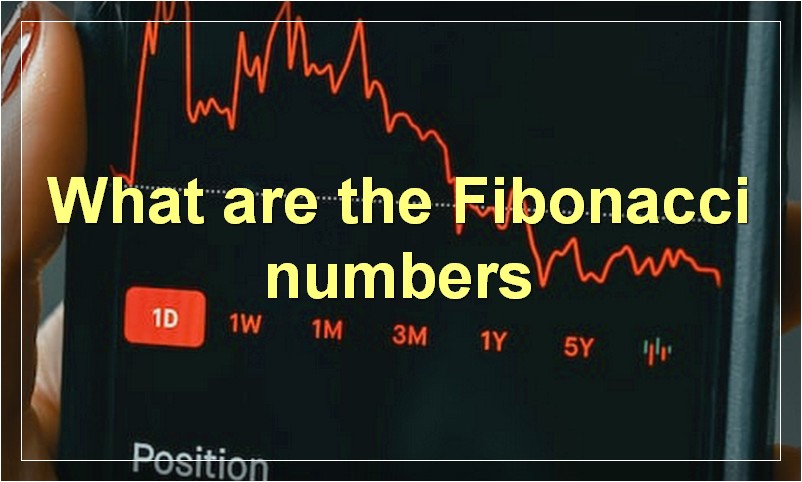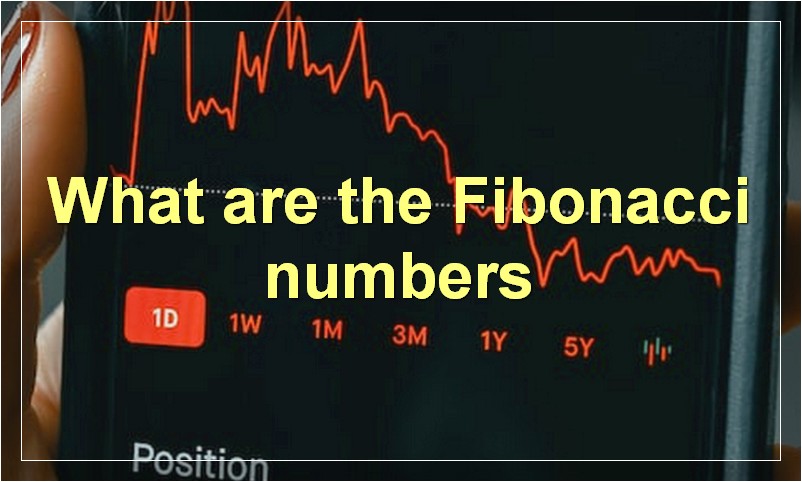If you’re looking for an interesting way to spend an afternoon, try delving into the world of Fibonacci numbers.
What is the Fibonacci sequence
The Fibonacci sequence is a series of numbers where each number is the sum of the two previous numbers. The first two numbers in the Fibonacci sequence are 0 and 1, and the next number is always the sum of the previous two.
The Fibonacci sequence can be used to model many real-world phenomena, such as the growth of a population or the spread of a virus. It also has applications in computer science and mathematics.
What are the Fibonacci numbers

The Fibonacci numbers are a sequence of numbers that start with 0 and 1, and each subsequent number is the sum of the previous two.
The Fibonacci sequence is named after Italian mathematician Leonardo of Pisa, known as Fibonacci. Fibonacci’s 1202 book Liber Abaci introduced the sequence to Western European mathematics, although the sequence had been described earlier in Indian mathematics.
The Fibonacci numbers are important in nature because they appear often in the arrangement of petals on flowers and in the spiral arrangement of leaves and seeds on a plant. They also appear in the scales of certain animals, such as snakes.
The Fibonacci numbers are also used by some artists, architects and musicians in their work.
How do you calculate the Fibonacci numbers
There are a few different ways that you can calculate the Fibonacci numbers. One way is to use what is called the Fibonacci sequence. This sequence is created by starting with the numbers 0 and 1, and then adding the two previous numbers together to get the next number in the sequence. So the Fibonacci sequence would look like this: 0, 1, 1, 2, 3, 5, 8, 13, 21, 34, 55, 89, 144, 233, 377, 610, 987, 1597, 2584, 4181, 6765, 10946, 17711, 28657, 46368, 75025, 121393, 196418, 317811, 514229, 832040, 1346269, 2178309, 3524578, 5702887, 9227465, 14930352, 24157817, 39088169… and so on. As you can see, each number in the sequence is the sum of the two previous numbers.
Another way to calculate the Fibonacci numbers is to use what is called the Fibonacci formula. This formula is F(n) = ((1+sqrt(5))^n-(1-sqrt(5))^n)/(2^n*sqrt(5)). This may look complicated but it’s actually not too difficult to understand if you break it down. The F(n) part of the equation just means “the nth Fibonacci number.” So what we’re really doing is plugging in a number for n and then calculating what that Fibonacci number is. For example, if we wanted to calculate the 10th Fibonacci number using this formula we would plug in 10 for n like this: F(10) = ((1+sqrt(5))^10-(1-sqrt(5))^10)/(2^10*sqrt(5)). This would give us a result of 55. You can use this same formula to calculate any Fibonacci number you want.
So those are two different ways that you can calculate the Fibonacci numbers. Which one you use really just depends on what you’re more comfortable with.
What is the Fibonacci calculator
The Fibonacci calculator is a tool that allows you to find the Fibonacci sequence for any given number. The Fibonacci sequence is a series of numbers in which each number is the sum of the two preceding numbers. The first two numbers in the Fibonacci sequence are 0 and 1, and the next number in the sequence is always the sum of the previous two numbers.
How do you use the Fibonacci calculator
The Fibonacci calculator can be used to calculate the Fibonacci sequence for any given number. The Fibonacci sequence is a series of numbers where each number is the sum of the previous two numbers in the sequence. The Fibonacci calculator can be used to calculate the Fibonacci sequence for any given number. To use the Fibonacci calculator, simply enter the number you wish to calculate the Fibonacci sequence for and click on the “Calculate” button. The Fibonacci calculator will then calculate the Fibonacci sequence for the given number and display it on the screen.
What is the highest Fibonacci number

The highest Fibonacci number is 144. This number is the result of adding together the two previous Fibonacci numbers, 89 and 55. The Fibonacci sequence is named after Italian mathematician Leonardo of Pisa, who discovered it in the 12th century.
What is the lowest Fibonacci number
The Fibonacci numbers are a sequence of integers that starts with 0 and 1, and each subsequent number is the sum of the previous two. The lowest Fibonacci number is 0.
How many Fibonacci numbers are there
There are an infinite number of Fibonacci numbers. This is because the Fibonacci sequence is defined as a recurrence relation, which means that each number in the sequence is determined by the two previous numbers. Because there are an infinite number of numbers in the Fibonacci sequence, there are also an infinite number of Fibonacci numbers.
Is the Fibonacci sequence infinite
The Fibonacci sequence is a mathematical sequence of numbers that starts with 0 and 1, and each subsequent number is the sum of the previous two. The sequence goes like this: 0, 1, 1, 2, 3, 5, 8, 13, 21, 34, 55, 89, 144, 233, 377, 610… and so on forever.
The Fibonacci sequence is named after Italian mathematician Leonardo Fibonacci, who first described it in his 1202 book Liber Abaci.
So is the Fibonacci sequence infinite? Yes, it is. As long as there are numbers, we can keep adding them together to get new Fibonacci numbers.
What are some applications of the Fibonacci sequence
The Fibonacci sequence is a mathematical concept that can be applied in various ways. One example is in nature, where the Fibonacci sequence can be found in the growth patterns of plants and animals. The sequence can also be used to generate art and music, and to create mathematical models.

